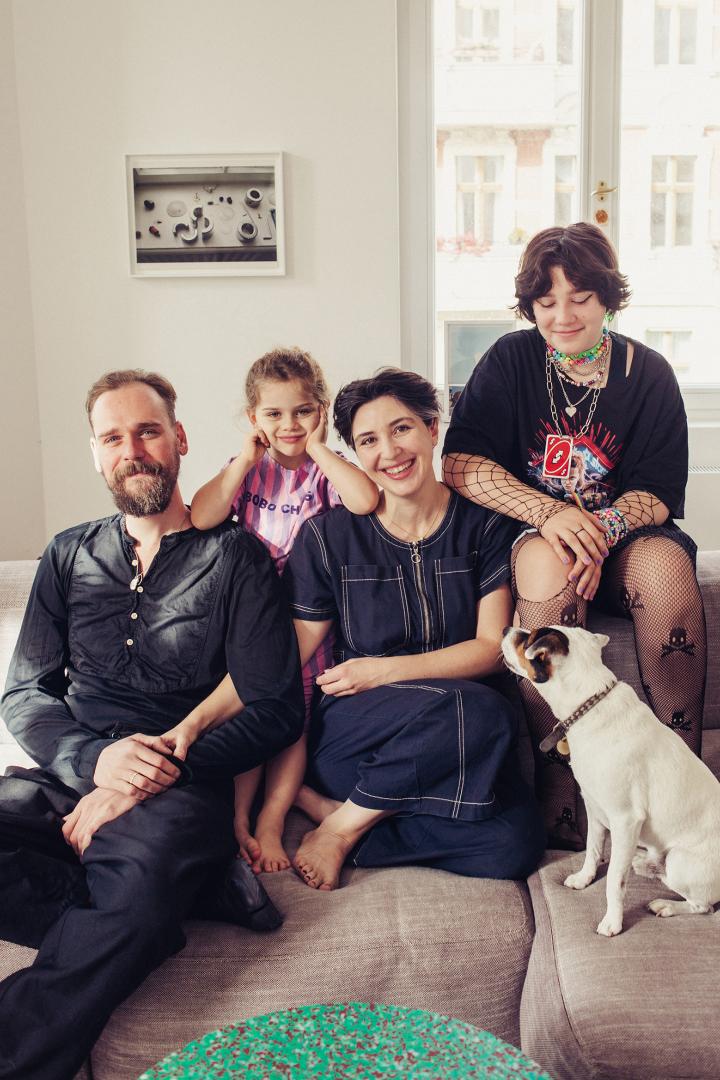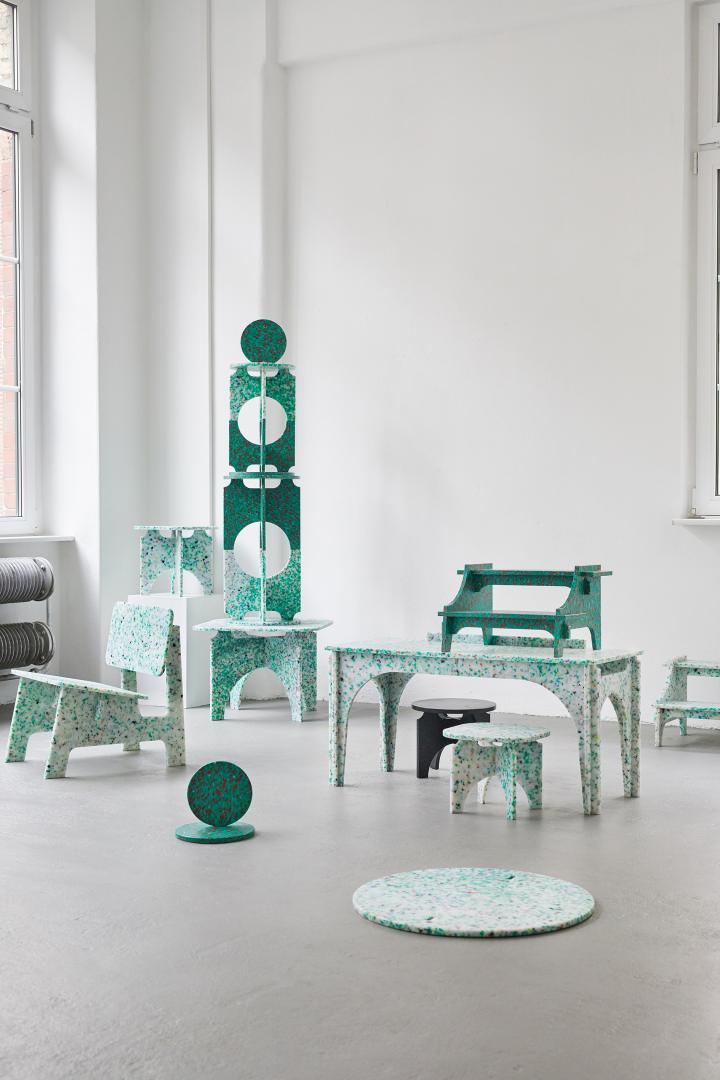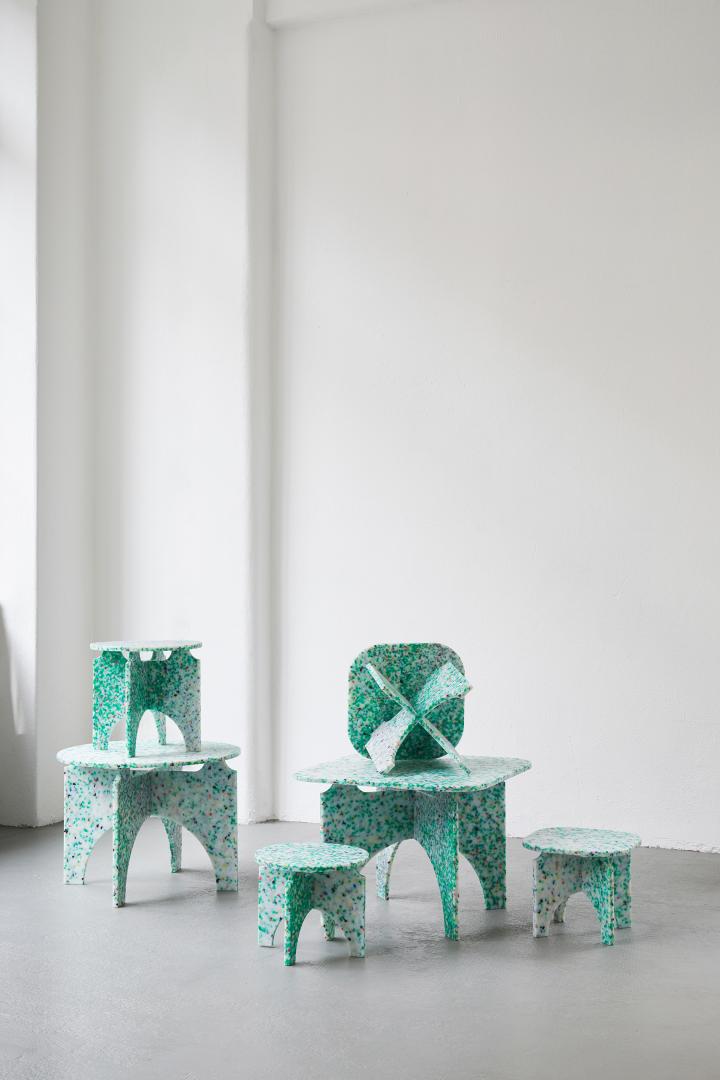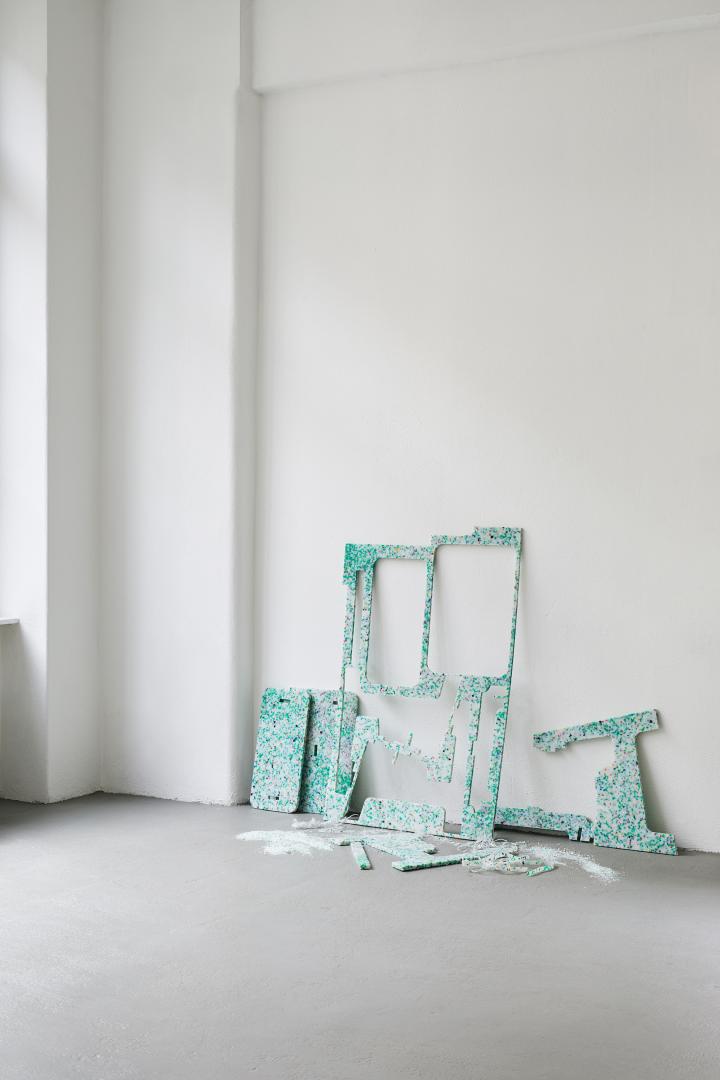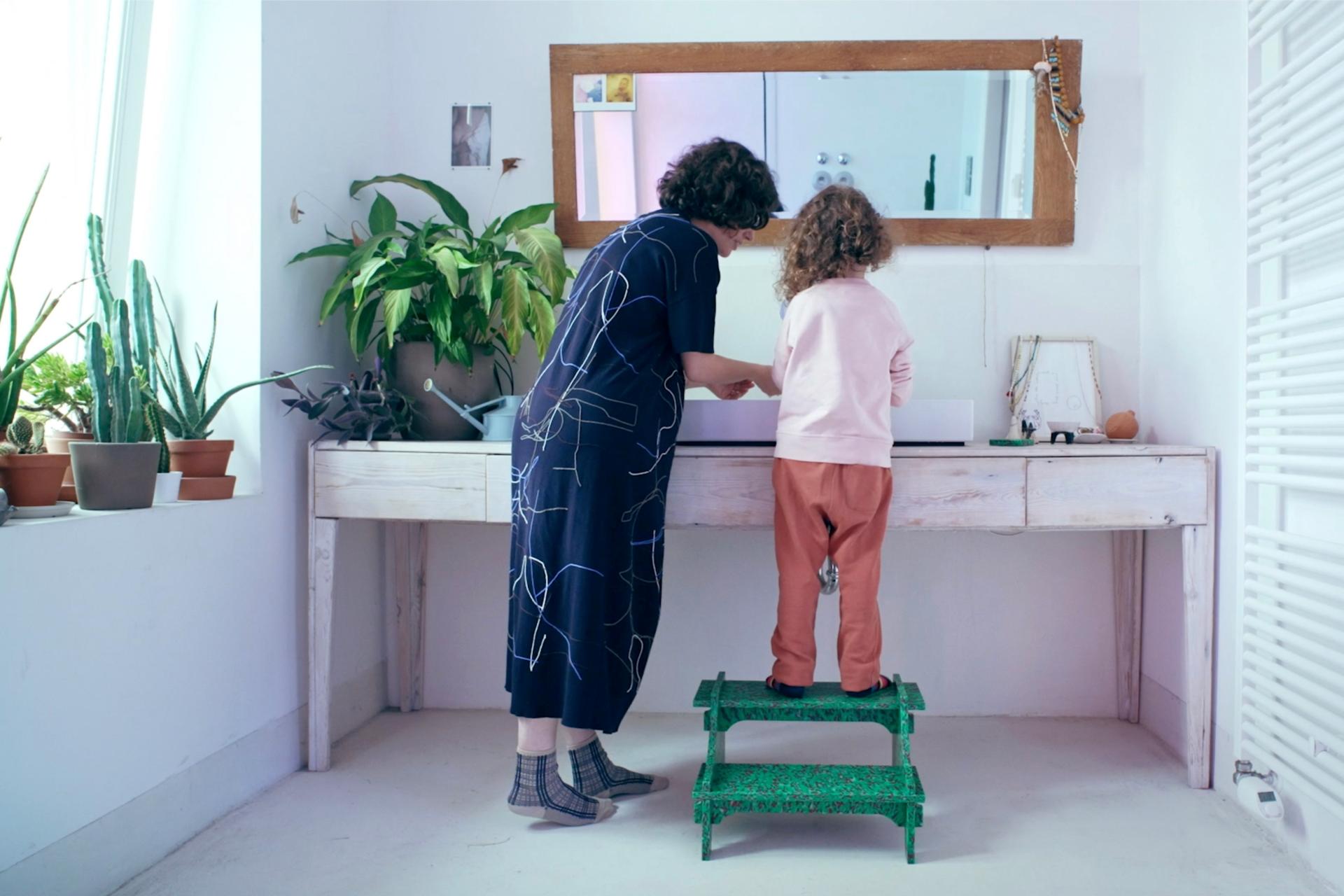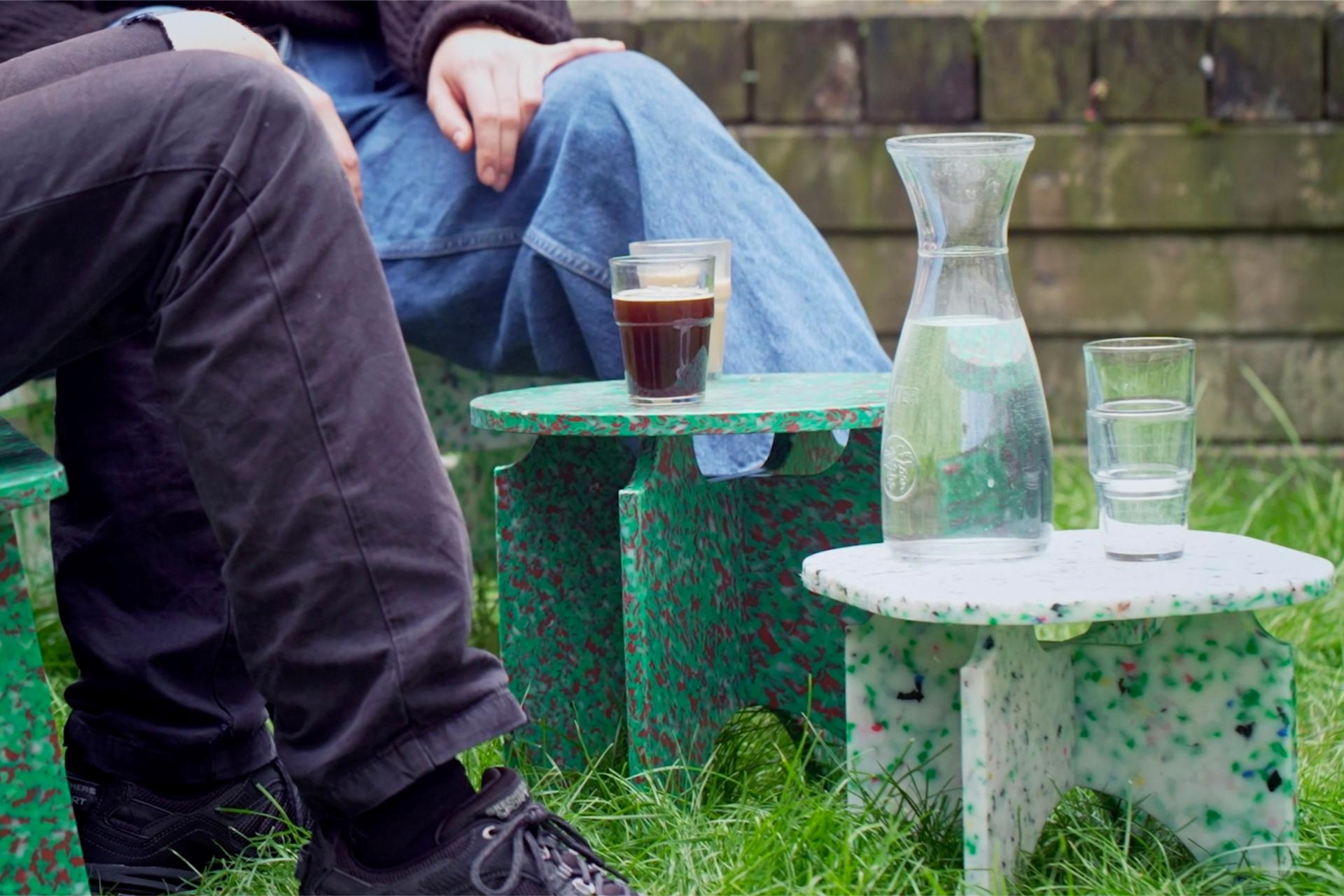The MINIMONO Project
Basic information
Project Title
Full project title
Category
Project Description
We are a multicultural couple based in Berlin. We create durable and multifunctional furniture for the whole family with the principles of circular design. We upcycle HDPE plastic sheets into items fit for different generations and purposes, with the aim of encouraging a positive consumption pattern that inspires even the youngest user.
Our brand is based on five principles: circular design, sustainable material, practical use, conscious production and waste neutral distribution.
Geographical Scope
Project Region
Urban or rural issues
Physical or other transformations
EU Programme or fund
Which funds
Description of the project
Summary
We are Julieta and Dirk, a multicultural couple based in Berlin trying to create a better future for – and with - our two children. We all are MINIMONO.
By contemplating the waste we produce as a household we came to two conclusions: one, kids furniture is only made for the fugitive years of childhood and two, a piece of the plastic we throw out on daily bases won't decompose during our childrens' lifetime. After this double enlightening realization, we felt compelled to put our past experiences as an architect and art gallerist to work and turn them into creating alternatives for a more sustainable tomorrow.
Our aim is to turn discarded plastic into life-lasting furniture adaptable to multiple uses, environments and generations.
In the MINIMONO Project we create durable and multifunctional flat pack furniture for the entire family following the guiding principle of circularity for a regenerative future.
We upcycle HDPE plastic sheets into items fit for different generations and needs, with the aim of encouraging a positive consumption pattern that inspires the youngest user. We believe that everyday objects have the power to get people engaged with the circular economy.
Our business model is based on five principles: circular design, sustainable material, conscious production, optimized distribution and practical use; which we apply in a systemic approach throughout the whole decision making and creative process achieving clear benefits in terms of circularity and sustainability as well as education and quality of life.
Key objectives for sustainability
The MINIMONO is a clear example of how it is to fully develop a business based on circularity and following sustainable principles.
This project has been entirely conceived attending the principles of circular design, since we firmly believe that far from being a drag on growth, circular economy is the only possible form of long-term development and wellness.
In the belief that durability is key to sustainability, our products are made from recycled HDPE plastic sourced from industrial waste, a material that is non-toxic, resistant, easy to clean and suitable for different environments. We are plastic appreciators and believe that plastic should be treated as anything but rubbish. HDPE is one of the easiest plastics to recycle and can be reused at least 8 times without losing any quality.
The pieces are CNC milled optimizing the sheets to the maximum, to implement our circular design concepts the off-cuts go back into recycling to create new sheets or other MINIMONO products, minimizing both production waste, logistics, carbon imprint and transport costs.
MINIMONO furniture is flat pack to reduce the impact of distribution. Packaging is 100% recycled and designed to create little waste as possible.
All of the pieces are mono material, not even one metal screw or additional piece is needed for assemblage, they are conceived to be in use for many years, but they are also 100% recyclable.
Furthermore our products have an “end-of-life guarantee”: we offer to re-buy the pieces from our customers to retain ownership of the valuable material and take responsibility for keeping it in use by making new sheets or turning it into new MINIMONO products.
Key objectives for aesthetics and quality
The key objective of the project is to create multi-generational and durable designs that have numerous uses for different people. The terrazzo optic of our panels makes it fun for children and attractive for adults, it is a new material that hasn't been used in furniture design before yet resonates with our contemporary taste.
We aim to create versatile and polyvalent furniture that works for adults and children. In order to ensure its longevity of use, we design with both functionality and aesthetics in mind. Kids love the MINIMONOS, but their parents crave them too, so when children grow out of a piece parents don't want to get rid of it and they will be able to repurpose it.
Additionally our mono-material furniture is flat pack and put together without any screws or tools, that is not only good for recycling but prompts an interesting assembling experience in which children can be involved.
The furniture adapts perfectly to a modern nearly nomad lifestyle: you can easily take it with you to your new home and will surely find a new spot for it!
Our designs are circular, and therefore also inseparable from production: the pieces are designed using computer aided design programs to optimize the material for the CNC milling, in order to generate as few off-cuts as possible. We consider that accounting the production and manufacturing process as part of the design is essential and exemplary to create sustainable products and adds another level of value to the final result.
Key objectives for inclusion
With the aim of global inclusion we offer the blueprints of our designs online so they can be re-produced by individuals all over the world using locally sourced raw materials, we believe in creating a new global craftsmanship, which can be an example to achieve both affordability and accessibility and is an imitable model for other designers.
Our designs are inclusive for all body types, ages and sizes.
We only sell through our own online shop to try to compensate for the higher prices of recycled materials whilst keeping our products as affordable as possible.
We promote a sustainable way of life and understand sustainability goes beyond the environment, to also being mindful of our personal impact. We are a family business with limitations, but with an honest and genuine desire to do well, stay accountable and constantly improve.
Results in relation to category
MINIMONO is a exemplary, state of the art project in section A category 4 “Shaping a circular industrial ecosystem and supporting life-cycle thinking” since the values of sustainability, aesthetics and inclusion have been the core of the project from the beginning allowing us to come up with results, such as the use of 100% recycled materials, or the “end-of-life guarantee” of our products that can surely contribute to broaden circular thinking in the commercial sector.
Our ultimate purpose is to show that it is possible to create a successful business on the base of circularity. We want to be the proof-of-concept that circular design methods can be implemented and widen our sphere of influence to other businesses inspiring them to develop in this direction and make commitments to protect limited resources and contribute to change.
How Citizens benefit
We developed the project during a global pandemic, from the enclosure of our home during lockdown so it is mainly driven by our own experience as parents and as family. Our daughters aged 11 and 3 were closely involved in the developing process which gave us the opportunity to carefully attend to different points of view and unlock value at every stage of the process.
The MINIMONO Project was crowd funded during Autumn of 2021, which gave us the opportunity to be able to tell our story, evaluate the general interest in our products and create a customer base. More importantly gave us the possibility to gain early feedback and inquiries coming directly from potential customers that have been precious benefits for the final development of the project. Having a dialogue between us as designers and our customers from the beginning of the project created not only a foundation of trust and transparency, but also collaborations, suggestions and a valuable word of mouth advertising that helped us enlarge our circle.
Physical or other transformations
Innovative character
MINIMONO gives flat pack furniture a new value that differentiates itself in terms of quality and sustainability from the actual common practices.
Our furniture is not only efficient in storage space and economizes impact and transport costs but it is also manufactured, packed and delivered almost waste neutrally and the pieces are easily assembled without any screws or additional parts, which we consider an unique and innovative approach.
Even though you can assemble any MINIMONO piece in less than 5 minutes without any tools, the furniture is sturdy and qualitative, can be unmounted and mounted again and be in use for many years which is normally not the case or even the goal of the mainstream flat pack furniture companies.
Learning transferred to other parties
We firmly believe that any business has the potential of moving towards circularity. With the right mindset and focusing on a few important values and principles it is possible to formulate the right questions and seek answers that will transform the current practices.
We developed a business model based on circular design that can be replicated, scaled and adjusted to other companies. We hope to be able to share our learnings with future collaborators, such as sheet makers, manufactures or packaging designers.
Understanding circular flows, working on multidisciplinary teams, designing having the product's life in mind and searching for circular opportunities within the company are some tools and methods that can be used. Most importantly being open for growth, staying accountable, offering transparency to customers and exploring the opportunities for unexpected partnerships can be key principles to generate change: sustainability is always a purpose.

